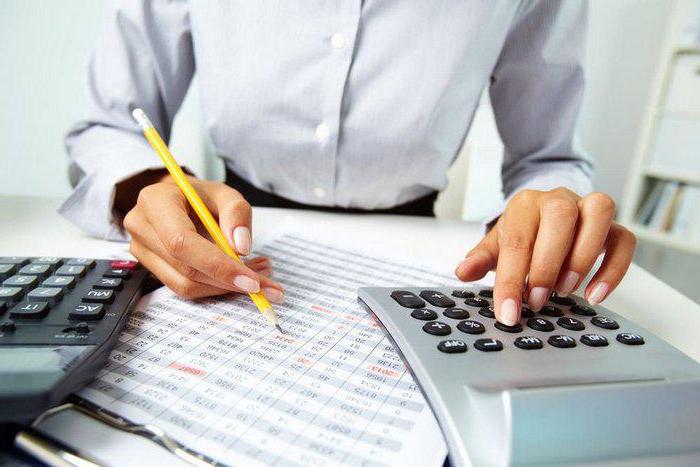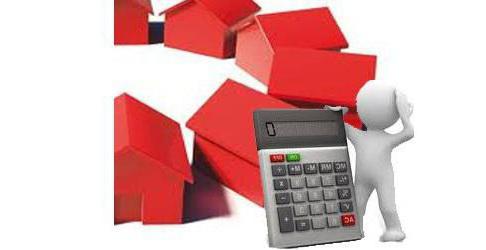The general taxation system (OSNO) is considered the most burdensome regime in terms of the amount of reporting and the burden on the subject. Many enterprises resort to the help of specialists to deal with documentation and payments. Meanwhile, for a number of payers, the taxation system of the OSHO is the most profitable. Let's consider it in more detail. 
In what cases is it beneficial to use OSSO?
Tax system IP may be different. The company has the right to use the simplified or imputed mode. They are much lighter than the traditional OSNO taxation system. When is it profitable to use it? It is advisable to switch to OSNO in the event that most of the partners, buyers also apply this system, while being VAT payers. This is due to the following. Enterprises can subsequently reduce the tax on the amounts paid to contractors and suppliers. Partners and customers using the traditional regime, in turn, have the right to deduct the deducted VAT. This significantly increases the attractiveness of cooperation. In addition, the OSNO taxation system provides for the possibility of deducting VAT paid upon importation of products into the customs territory of Russia.
Types of deductions
Enterprises must make certain mandatory contributions to the budget. Their list will depend on the form of ownership of the company using OSNO. Taxation system for LLC and AO provides for deductions:
- From profit. The basic rate - 20%, special - 0-30%.
- VAT. There are three rates for this tax: 0%, 18%, 10%.
- From the property of the enterprise. The rate of this tax is 2.2%.
Individual entrepreneurs must pay:
- Personal income tax, if in the reporting year IP was a resident of the Russian Federation. The rate is 13%.
- VAT. The rates of this deduction are similar to those indicated above.
- Personal property tax. Its rate is up to 2%.

Features of the transition to the traditional mode
Upon registration of the enterprise or termination of the use of other schemes, the subject automatically becomes OSSO. If the company is satisfied with this mode, there is no need to send a notification to the Federal Tax Service. An automatic transition is carried out if:
- Within the established time period, the enterprise did not inform the control body about setting up special regime.
- The right to apply a patent, ECH, UTII, USN has been lost.
Letter on the applicable taxation system: sample (OSNO)
If, by decision of the control body or on its own initiative, the company moves from a special to a traditional regime, it needs to take a number of mandatory actions. First of all, a notice is drawn up. Consider how a letter is compiled on a taxation system (basic model). The document includes 1 page. It contains the following details:
- TIN and PPC payer.
- IFTS code. It should be clarified in the inspection.
- The full name of the entity making up the notice.
- The period from which the mode will be used.
- Contact details of the organization and the person providing the notice.
Nuances
When switching to the traditional taxation regime, an enterprise needs to restructure its tax and accounting system and ensure timely documentation, including declarations, the number of which will increase. Another important point to remember. The letter that is sent to the Federal Tax Service has a notification character and does not act as a request.In essence, the enterprise should only remind the inspectorate that it should be considered as a subject using the traditional regime. It is necessary to send a notice within the time period established by law, otherwise fines may follow. However, the inspection will not send any supporting document in response. The FTS will simply make the necessary changes to the registries. If the company decides to voluntarily switch to OSNO without losing the right to use special modes, the transition will be carried out from next year. Notification can be sent before January 15th.
Important point
Many entrepreneurs are interested in whether a certificate of the taxation system (sample of basic tax liability) is issued? It should be said that the legislation does not provide for such a document. However, partners may request some paper to confirm the mode used. Some enterprises are developing their own certificate of the applicable tax system (sample). OCHA can also be confirmed by providing documents on settlements with government agencies. It will indicate all deductions made by the enterprise to the budget. This document can be requested from the Federal Tax Service. 
Profit deductions
How is revenue accounting carried out if the company uses the OSNO system? Profit is expressed as the difference between income and expenses. Based on the primary documentation, the following are taken into account:
- Revenues from the sale of goods, property rights, services.
- Non-operating income. They, in particular, are income from the transfer of property for rent, interest earned on loans, equity in other companies, and so on.
In Art. 251 of the Tax Code defined income that is not taken into account when taxed. Costs are costs that are documented. The more there will be, the lower the amount of tax. In this regard, it should be remembered that during the inspection of the Federal Tax Service it will especially carefully study the feasibility of costs. Costs may be:
- On the implementation and production. For example, the cost of salaries, the purchase of materials, etc.
- Non-operating. These include interest on debt, expenses for the maintenance of property received for rent, etc.
Some costs are not taken into account when taxing. They are defined by Art. 270 Tax Code 
Down payments
They can be deducted in one of the following ways:
- At the end of the 1st quarter, six months, 9 months. + monthly amounts within one quarter. The latter are deducted no later than the 28th day of the next month. Quarterly amounts are paid until the 28th day of the month following the reporting period. The need to make deductions every month depends on the amount of income received by the enterprise. At the end of the reporting period, the average revenue for past consecutive four quarters is calculated. If during this time the company’s income does not exceed 10 million rubles. / sq., she is exempted from the obligation to pay advances. In this case, the notification is not sent to the control inspection.
- At the end of the 1st quarter, six months, 9 months. no monthly deductions. Payment is made until the 28th day of the month following the reporting period. This method can be used by enterprises whose income for the last 4 quarters has not reached 10 million rubles / sq. , as well as autonomous, budgetary institutions, NPOs that do not receive income from sales.
- At the end of each month, the profits actually arrived before the 28th day of the next month. The use of this method is allowed only from the beginning of the year. The company must notify the controlling body of the transition to such payments by December 31 of the current period.

Personal income tax
The entrepreneur pays tax on income from his business activities. In addition, there is an obligation to deduct personal income tax from income not related to activities. An entrepreneur can reduce the amount of income for professional deductions. Moreover, they must be justified and supported by documents.The amount of tax is calculated as follows:
- PIT = (income - deductions) x 13%.
At the same time, the indicated rate is valid for individuals who were residents during the last reporting year. To obtain this status, the subject must stay in the country for 183 days for 12 consecutive months. For non-residents, a rate of 30% is set.
VAT
This tax is considered indirect. It is installed for the end user. VAT is paid upon the sale of products and the provision of services, as well as upon import of goods. The tax rate is usually 18%. However, the tariff can be zero or ten percent. The total amount of VAT can be reduced by the amount of deductions. They should be understood as tax:
- Presented to the company by suppliers when purchasing products and services. It should be said here that if the counterparty uses special regime, then the VAT paid by him for deduction cannot be accepted.
- Deducted at customs upon import.
To accept VAT deduction, you must:
- Put relevant products / services on balance. Confirmation of this will serve as primary documents.
- Have an invoice.

Features of VAT calculation
Determining the amount payable is a rather laborious procedure. Consider the general calculation procedure. To determine the amount, you must:
- Allocate tax on all income. The formula will be: VAT = (all income) x 18/118.
- Allocate deductible tax. The equation is as follows: VAT = (acquisition, expenses) x 18/118.
- Determine the amount payable. For this, the second is subtracted from the first value.



